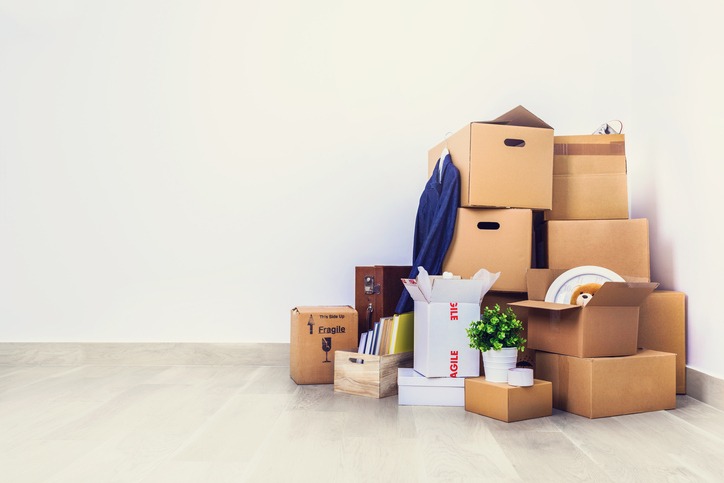Welcome to “The Art of Packing Strategies for Efficient Moving”! This guide is designed to help you master the art of packing and make your next move as smooth and stress-free as possible. Moving can be a daunting task, but with the right strategies, you can save time, money, and energy throughout the process.
In this article, we will cover everything from decluttering and organizing your belongings to choosing the right packing materials and efficiently packing and labeling your boxes. We will also provide tips for moving specific items such as fragile items, electronics, and furniture.
No matter if you are moving across town or across the country, these strategies will help you stay organized and keep your belongings safe during the move. So let’s dive in and learn the art of packing for efficient moving!
Overview of the art of packing
Packing is the process of preparing your belongings for safe transportation from one location to another. It may seem like a simple task, but when done incorrectly, it can lead to damaged or lost items, as well as increased stress and frustration.
To master the art of packing, you need to have a plan in place and be organized throughout the entire process. This includes decluttering and sorting your belongings, choosing the right packing materials, and efficiently packing and labeling your boxes.
Packing can also be an opportunity to declutter and get rid of unwanted or unnecessary items. This not only reduces the number of things you need to pack but also saves you time and money in the long run.
With a solid plan in place, the right tools and materials, and the right packing techniques, you can make your next move efficient and stress-free. So let’s explore each of these aspects in more detail.
Strategies for Efficient Moving
Here are some strategies for efficient moving that will help you pack your belongings quickly and effectively:
Create a packing plan:
One of the most important strategies for efficient packing is to have a plan in place. This involves creating a timeline and list of tasks that need to be completed before your moving day. Having a plan can help you stay organized, prioritize tasks, and avoid any last-minute chaos.
Start by creating a list of all the rooms in your home and break down the packing process into smaller, manageable tasks. Assign each task to a specific day and stick to your plan.
Use the right packing materials:
Having the right packing materials is essential for keeping your belongings safe during the move. Invest in sturdy boxes, bubble wrap, packing paper, and tape to ensure that your items are properly protected.
You can also use clothing, towels, and linens as padding for fragile items rather than buying additional packing materials. This not only saves money but also reduces waste.
Pack smartly:
When it comes to packing, it’s essential to be strategic. Start by packing items that you don’t use regularly and save the daily essentials for last. Pack similar items together in one box and label them accordingly. This will not only save space but also make unpacking easier.
It’s also a good idea to pack heavier items at the bottom of the box and lighter items on top to prevent any damage to fragile items.
Label boxes clearly:
Labeling your boxes properly is crucial for an efficient and stress-free move. It’s easy to get caught up in the packing process and forget to label boxes, but this can lead to a lot of confusion when it comes time to unpack.
Make sure to clearly label each box with its contents and which room it belongs in. Using different colored labels or markers can also help you easily identify which boxes go where.
Take inventory:
As you pack, make sure to keep an inventory list of all your belongings and which box they are packed in. This can be helpful when unpacking, as you will know exactly where everything is located. It can also serve as a checklist to ensure that nothing gets left behind.
You can use a notebook or an app to keep track of your inventory list, and it’s important to update it as you pack each box. This will save you time and effort in the long run, especially if you have a lot of boxes.
Pack one room at a time:
To stay organized and reduce chaos, it’s best to pack one room at a time. This not only helps you keep track of which items are packed in which boxes but also ensures that items from one room don’t end up in another.
Start with the least used rooms first and save the most frequently used rooms for last. This will ensure that your essential items are easily accessible until moving day.
Properly pack fragile items:
Fragile items require extra care when packing to prevent any damage during the move. Use plenty of bubble wrap and padding to protect these items, and make sure to label them as fragile.
It’s also a good idea to pack them in smaller boxes rather than larger ones to avoid any shifting or movement during transportation. Additionally, clearly mark these boxes with the word “fragile” and indicate which side should be kept up.
The importance of decluttering
Decluttering is a crucial step in the packing process and should not be overlooked. It involves going through all of your belongings and getting rid of anything that you no longer need or use. This not only reduces the number of things you need to pack but also ensures that you are not bringing unnecessary items to your new home.
It can be helpful to start decluttering early on in the moving process, so you have enough time to go through all of your belongings thoroughly. You can donate, sell, or throw away any unwanted items. Not only does this save you time and energy during the packing process, but it can also potentially earn you some extra cash.
Additionally, decluttering can help you save money on moving expenses. The less stuff you have to pack and transport, the fewer boxes and trucks gather packing supplies you will need, which can result in lower moving costs.
Tips for an Organized Move
An organized move not only saves you time and stress but also ensures that your belongings arrive safely at your new home. Here are some tips for staying organized during the moving process:
Keep important documents in one place:
Throughout the moving process, it’s essential to keep all of your important documents in one place. This includes items such as passports, birth certificates, insurance policies, and any other crucial paperwork.
Designate a specific folder or binder for these documents and make sure to keep it with you at all times. You don’t want to risk misplacing or losing these important items during the move.
Pack an essentials box:
An essentials box is a must-have for an organized move. This box should contain all the essential items you will need during your first few days in your new home. This can include things like toiletries, medications, a change of clothes, important documents, and any other daily essentials.
Make sure to label this box clearly and keep it with you during the move. This way, you’ll have easy access to these necessities without having to dig through all of your boxes.
Utilize storage options:
If you’re downsizing or have items that you don’t need immediately, consider utilizing storage options for these belongings. This will help reduce clutter in your new home and give you time to properly organize and unpack without feeling overwhelmed.
You can rent a storage unit, use a friend or family member’s garage, or even consider using temporary storage solutions like portable storage containers.
Keep a moving checklist:
Having a detailed moving checklist can help you stay organized and on track. Make a list of all the tasks that need to be completed before, during, and after the move. This will ensure that you don’t forget any important steps along the way.
You can also break down your checklist by room or by week to make it more manageable. As you complete each task, make sure to check it off the list for a sense of accomplishment and to keep track of your progress.
Ask for help:
Don’t be afraid to ask for help during the moving process. Whether it’s from friends, family, or professional movers, having an extra pair of hands can make a big difference in staying organized.
You can also delegate tasks to different people based on their strengths and availability. This will not only help you get things done more efficiently but also alleviate some of the stress of moving. So, don’t hesitate to reach out for assistance when needed.
FAQs
What are some essential packing tips for moving efficiently, especially when it comes to packing clothes, and how can wardrobe boxes streamline the process?
Explore key packing tips for moving, focusing on efficient packing of clothes. Learn how to utilize wardrobe boxes to streamline the process and keep your clothing items organized during the move. Discover strategies for gathering packing supplies, including packing tape and sturdy cardboard boxes, to ensure a smooth packing experience.
How should I start packing for a move, and what are some packing tips to efficiently pack boxes and utilize storage space effectively?
Gain insights into the art of packing and learn how to start packing for a move efficiently. Explore packing tips to ensure that items are packed securely and utilize storage space effectively. Discover the importance of gathering the right packing supplies, including packing tape and sturdy cardboard boxes, to pack boxes in an organized and space-efficient manner.
What strategies can I employ to pack efficiently and save time when it comes to packing a few boxes or preparing items for the moving truck?
Learn strategies for efficient packing, especially when dealing with a smaller number of items or preparing for the moving truck. Discover how to gather the necessary packing supplies, including packing tape and sturdy cardboard boxes, to pack a few boxes quickly and securely. Explore tips for organizing and labeling items to ensure a smooth transition during the move.
Conclusion:
Moving can be a daunting task, but with proper organization and planning, it can be a smooth transition. From taking inventory and packing one room at a time to decluttering and utilizing storage options, there are many ways to stay organized during the moving process.
Don’t forget to keep important documents in one place, pack an essentials box, and utilize a detailed moving checklist. And most importantly, don’t be afraid to ask for help when needed.






